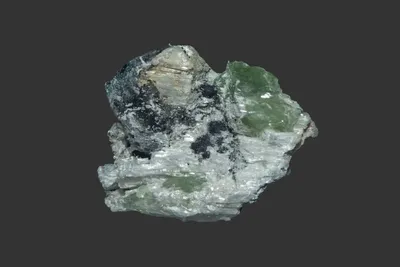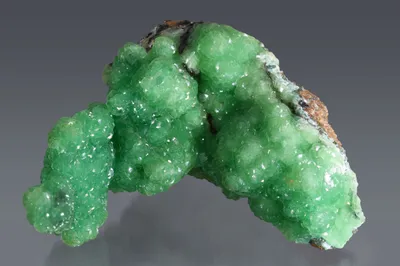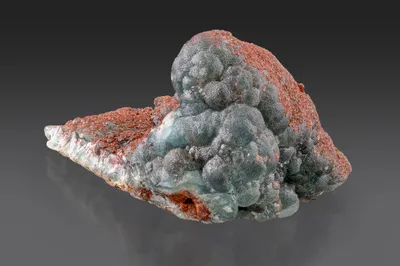Mineral Species
Gebhardite
Type Locality
Yes
Composition
Pb8(As3+2O5)2OCl6
Crystal System
Monoclinic
Status at Tsumeb
Confirmed (type locality)
Abundance
Extremely rare
Distribution
Second oxidation zone
Paragenesis
Supergene
Entry Number
Species; TSNB145
Type Mineralogy
In 1979 a specimen from Tsumeb’s "lower" oxidation zone with an unknown mineral was submitted for analysis by Dr Georg Gebhard, a German chemist and mineral collector. Analysis showed the unknown mineral to be a lead oxy-chloro-arsenite. IMA 1979-071 was named gebhardite in honour of its discoverer (Medenbach et al. 1983b). The crystal structure was refined by Klaska and Gebert (1981, 1982). Type material is conserved at the Ecole Nationale Supérieure des Mines, Musée de Minéralogie in Paris (catalogue number 54637), and at the Smithsonian Institution in Washington D.C. (catalogue number 147360).
General Notes
Gebhardite is an extremely rare mineral which, more than forty years after its discovery, remains unique to Tsumeb (www.mindat.org; accessed January 2023). Medenbach et al. (1983b) stated that the type material was from the "lower" oxidation zone; we note, however, that the distinction between second and third oxidation zones was not recognised at that time. The vintage of the specimen (late 1970s) and its paragenesis (specifically reinerite) are supportive of a second oxidation zone origin, but a more precise location from which the type specimen was recovered is not known.
The type specimen comprises a 5 cm matrix of deeply weathered siliceous carbonate ore on which an unusual paragenesis of secondary minerals is developed (Medenbach et al. 1983b). Gebhardite occurs as acicular, brown, transparent crystals (to 3 mm in length; Keller and Bartelke 1982) that superficially resemble millerite. It is associated with white to pale-green crystals of reinerite (to 15 mm) and in direct contact with grey, warty aggregates of mimetite. This close juxtaposition of a lead chloro-arsenite (gebhardite) with a chloro-arsenate (mimetite) points to narrowly defined conditions of pH/Eh during crystallisation (Medenbach et al. 1983b).
Other associated secondary species include fraipontite, smithsonite, willemite, hematite, and quartz.
Gebhard (1999) considered the occurrence of gebhardite to be a once-only find. His description differs very slightly from those of Medenbach et al. (1983b) and Keller and Bartelke (1982) in that he mentions "…5 mm bundles of brown needles [of gebhardite] resembling millerite in appearance" associated with "…reinerite [that] forms up to 2 cm light green crystals on matrix…".
Associated Minerals
fraipontite; hematite; mimetite; quartz; reinerite; smithsonite; willemite




